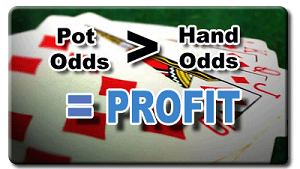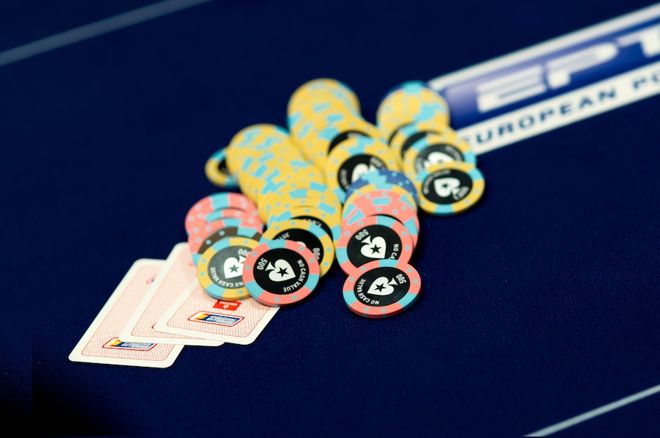Pot odds refers to the price of calling a bet relative to the size of the pot. For example, if the pot is $100 and your opponent bets $100, then you have to call $100 to win $200 (their bet plus. Pot Odds: The Definition The odds which are being offered to you when your opponent bets are called pots odds. Essentially it is how much you will win vs how much you have to risk – your risk to reward ratio. This is particularly useful when in a situation where you're. Use my free pot odds & implied odds tool today: video was created by for htt. Compare that with our odds of an out from earlier at 4:1, and we can safely say the pot odds are good enough to call our opponents bet of $20. In future articles I'll build on this idea of pot odds and the mathematics behind it, but understand that as long the odds of outs is better than the pot odds the bet is a relatively safe one to take. Pot odds Pot odds are defined as the ratio between the size of the pot and the bet facing you. For example, if there is $4 in the pot and your opponent bets $1, you are being asked to pay one-fifth of the pot in order to have a chance of winning it. A call of $1 to win $5 represents pot odds of 5:1.
What Is Pot Odds


This article is meant mainly for the novice poker player. To the poker novice, pot odds can be a confusing concept, but it's a very important fundamental of the game. Calculating pot odds can be difficult because it traditionally depends heavily on mental math skills. This article will hopefully start to explain the concept and present the reader with a practical skill that doesn't lean exclusively on mathematical approaches.


Calculating outs: This could be an article in itself, but plainly put, outs are the number of cards in the deck that could possibly improve the strength of your hand. When calculating the odds on your outs, you take into consideration the number of unknown cards in the deck vs the number of possible cards that could improve your hand. A common scenario and the example I'm going to use for this article is the flush draw in Texas Hold Em'. A player will have two hold cards, three flop cards, and one turn card to build a hand with before the all-important river card is revealed. If the player has 4 out of the 5 suited cards for a flush, they have a 37:9 or approximately 4:1 odds of seeing that 5th card that matches suit. In other words, you are four times more likely to lose the hand than win it. We call this the odds of an out. Roulette game information.

This article is meant mainly for the novice poker player. To the poker novice, pot odds can be a confusing concept, but it's a very important fundamental of the game. Calculating pot odds can be difficult because it traditionally depends heavily on mental math skills. This article will hopefully start to explain the concept and present the reader with a practical skill that doesn't lean exclusively on mathematical approaches.
Calculating outs: This could be an article in itself, but plainly put, outs are the number of cards in the deck that could possibly improve the strength of your hand. When calculating the odds on your outs, you take into consideration the number of unknown cards in the deck vs the number of possible cards that could improve your hand. A common scenario and the example I'm going to use for this article is the flush draw in Texas Hold Em'. A player will have two hold cards, three flop cards, and one turn card to build a hand with before the all-important river card is revealed. If the player has 4 out of the 5 suited cards for a flush, they have a 37:9 or approximately 4:1 odds of seeing that 5th card that matches suit. In other words, you are four times more likely to lose the hand than win it. We call this the odds of an out. Roulette game information.
Pot Odds Trainer
Calling the bet?: To decide whether or not we call our opponent's bet, we must quickly look at how much money is actually in the pot vs the size of our opponents' bet. Don't make the common mistake of thinking that a big pot is always worth chasing after. I'll explain being pot committed in a later article. Continuing with our example though, say there is $100 in the pot and your opponent just bet $20. That means there is now $120 in the middle of the table. You'll need to match your opponent's bet of $20 to see the river card, so it's going to cost you $20 to see that last card and see if you're the winner. $20 to $120 is easily calculated as 6:1 pot odds. Compare that with our odds of an out from earlier at 4:1, and we can safely say the pot odds are good enough to call our opponents bet of $20. In future articles I'll build on this idea of pot odds and the mathematics behind it, but understand that as long the odds of outs is better than the pot odds the bet is a relatively safe one to take.

